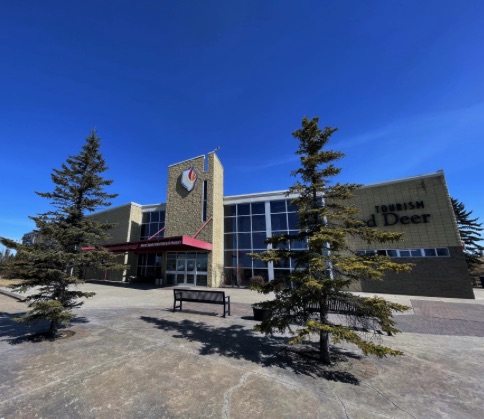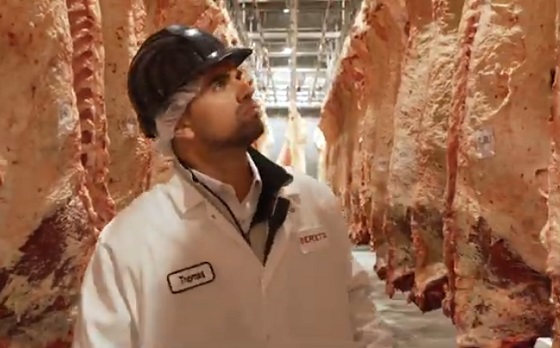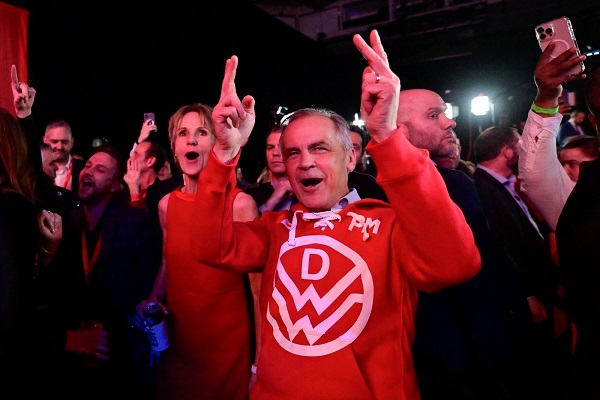Alberta
Shining a spotlight on Alberta athletes, sport leaders

Alberta’s government is continuing to support the Alberta Sports Hall of Fame, so it can showcase the province’s sport legacy for years to come.
The Alberta Sports Hall of Fame celebrates the accomplishments of more than 1,600 Albertans, from Olympic gold medallists to community sport leaders. To continue supporting this long-standing legacy, the government is providing $302,500 to the Alberta Sports Hall of Fame Museum. This funding will support the operations of the facility and the organization’s management and delivery of the annual Alberta Sport Recognition Awards.
“Alberta’s future is stronger when we understand and preserve our history and celebrate our successes. Places like the Alberta Sports Hall of Fame help us do just that. I’m proud our government is supporting it, as it spotlights Albertans with incredible athletic achievements and community contributions.”
“The Alberta Sports Hall of Fame has long been a cherished attraction in our community, offering Albertans inspiration and a window into the remarkable legacy of our athletes and community sport leaders. With our government’s investment in this institution, Red Deer’s tourism will undoubtedly grow, bringing significant benefits to our community and surrounding areas.”
“I am pleased to see the government’s support for the Alberta Sports Hall of Fame continue. This organization enriches the sport community in central Alberta, inspires the next generation of athletes and preserves our province’s history in sport excellence.”
The Hall of Fame provides a space where the accomplishments of the sport community in Alberta are preserved and inspires the province’s future athletes and community leaders. Albertans recognized in the Hall of Fame include Melody Davidson, who was inducted in 2008 for her excellence in hockey, serving as a two-time Olympic gold medal-winning head coach for Team Canada women’s hockey, and Lanny McDonald, who was inducted in 1993 following a long and successful career in professional hockey. Last year, 12 inductees were nominated, including Patrick Jarvis and Theresa Maxwell for their success in Paralympics and volleyball.
This funding will ensure that Albertans can continue to celebrate the province’s turning-point moments and growing legacy in sport.
“We are grateful for the support we have received from the Alberta government. Their funding has played a pivotal role in sustaining the Alberta Sports Hall of Fame, allowing us to preserve and celebrate the rich sporting history of our province. This support not only enhances our ability to showcase the achievements of the athletes, teams and sport champions but also reinforces the significant role sport plays in our community.”
“Red Deer proudly stands as a hub for sports excellence, and the Alberta Sports Hall of Fame plays a pivotal role in preserving and promoting our province’s rich athletic legacy. The City of Red Deer is grateful for the Alberta government’s continued support, ensuring that this institution continues to inspire future generations by showcasing the remarkable achievements of our athletes and community leaders.”
The Alberta Sports Hall of Fame helps grow tourism in Red Deer and the surrounding area by attracting visitors to the facility to enjoy interactive sport-oriented games and activities and sport memorabilia. In the past two years, an estimated 20,000 people have visited the Hall of Fame annually. Exhibits on different sports and sport organizations, including the Hall of Fame Gallery that showcases the athletes and sport builders who have been inducted annually since 1957, are also available to view.
Related information
Agriculture
Lacombe meat processor scores $1.2 million dollar provincial tax credit to help expansion

Alberta’s government continues to attract investment and grow the provincial economy.
The province’s inviting and tax-friendly business environment, and abundant agricultural resources, make it one of North America’s best places to do business. In addition, the Agri-Processing Investment Tax Credit helps attract investment that will further diversify Alberta’s agriculture industry.
Beretta Farms is the most recent company to qualify for the tax credit by expanding its existing facility with the potential to significantly increase production capacity. It invested more than $10.9 million in the project that is expected to increase the plant’s processing capacity from 29,583 to 44,688 head of cattle per year. Eleven new employees were hired after the expansion and the company plans to hire ten more. Through the Agri-Processing Investment Tax Credit, Alberta’s government has issued Beretta Farms a tax credit of $1,228,735.
“The Agri-Processing Investment Tax Credit is building on Alberta’s existing competitive advantages for agri-food companies and the primary producers that supply them. This facility expansion will allow Beretta Farms to increase production capacity, which means more Alberta beef across the country, and around the world.”
“This expansion by Beretta Farms is great news for Lacombe and central Alberta. It not only supports local job creation and economic growth but also strengthens Alberta’s global reputation for producing high-quality meat products. I’m proud to see our government supporting agricultural innovation and investment right here in our community.”
The tax credit provides a 12 per cent non-refundable, non-transferable tax credit when businesses invest $10 million or more in a project to build or expand a value-added agri-processing facility in Alberta. The program is open to any food manufacturers and bio processors that add value to commodities like grains or meat or turn agricultural byproducts into new consumer or industrial goods.
Beretta Farms’ facility in Lacombe is a federally registered, European Union-approved harvesting and meat processing facility specializing in the slaughter, processing, packaging and distribution of Canadian and United States cattle and bison meat products to 87 countries worldwide.
“Our recent plant expansion project at our facility in Lacombe has allowed us to increase our processing capacities and add more job opportunities in the central Alberta area. With the support and recognition from the Government of Alberta’s tax credit program, we feel we are in a better position to continue our success and have the confidence to grow our meat brands into the future.”
Alberta’s agri-processing sector is the second-largest manufacturing industry in the province and meat processing plays an important role in the sector, generating millions in annual economic impact and creating thousands of jobs. Alberta continues to be an attractive place for agricultural investment due to its agricultural resources, one of the lowest tax rates in North America, a business-friendly environment and a robust transportation network to connect with international markets.
Quick facts
- Since 2023, there are 16 applicants to the Agri-Processing Investment Tax Credit for projects worth about $1.6 billion total in new investment in Alberta’s agri-processing sector.
- To date, 13 projects have received conditional approval under the program.
- Each applicant must submit progress reports, then apply for a tax credit certificate when the project is complete.
- Beretta Farms has expanded the Lacombe facility by 10,000 square feet to include new warehousing, cooler space and an office building.
- This project has the potential to increase production capacity by 50 per cent, thereby facilitating entry into more European markets.
Related information
Alberta
Alberta Independence Seekers Take First Step: Citizen Initiative Application Approved, Notice of Initiative Petition Issued

Alberta’s Chief Electoral Officer, Gordon McClure, has issued a Notice of Initiative Petition.
This confirms a Citizen Initiative application has been received and the Chief Electoral Officer has determined the requirements of section 2(3) of the Citizen Initiative Act have been met.
Approved Initiative Petition Information
The approved citizen initiative application is for a policy proposal with the following proposed question:
Do you agree that Alberta should remain in Canada?
The Notice of Initiative Petition, application, and statement provided by the proponent are available on Elections Alberta’s website on the Current Initiatives Petition page.
As the application was received and approved prior to coming into force of Bill 54: Election Statutes Amendment Act, the Citizen Initiative process will follow requirements set out in the Citizen Initiative Act as of June 30, 2025.
Next Steps
- The proponent must appoint a chief financial officer within 30 days (by July 30, 2025).
- Once the 30-day publication period is complete and a chief financial officer has been appointed, Elections Alberta will:
- issue the citizen initiative petition,
- publish a notice on the Current Initiatives Petition page of our website indicating the petition has been issued, specifying the signing period dates, and the number of signatures required for a successful petition, and
- issue the citizen initiative petition signature sheets and witness affidavits. Signatures collected on other forms will not be accepted.
More information on the process, the status of the citizen initiative petition, financing rules, third party advertising rules, and frequently asked questions may be found on the Elections Alberta website.
Elections Alberta is an independent, non-partisan office of the Legislative Assembly of Alberta responsible for administering provincial elections, by-elections, and referendums.
-

 Alberta6 hours ago
Alberta6 hours agoAlberta Independence Seekers Take First Step: Citizen Initiative Application Approved, Notice of Initiative Petition Issued
-

 Crime5 hours ago
Crime5 hours agoNational Health Care Fraud Takedown Results in 324 Defendants Charged in Connection with Over $14.6 Billion in Alleged Fraud
-

 Health4 hours ago
Health4 hours agoRFK Jr. Unloads Disturbing Vaccine Secrets on Tucker—And Surprises Everyone on Trump
-

 Bruce Dowbiggin7 hours ago
Bruce Dowbiggin7 hours agoThe Game That Let Canadians Forgive The Liberals — Again
-

 Agriculture2 days ago
Agriculture2 days agoCanada’s supply management system is failing consumers
-

 Alberta1 day ago
Alberta1 day agoCOVID mandates protester in Canada released on bail after over 2 years in jail
-

 armed forces24 hours ago
armed forces24 hours agoCanada’s Military Can’t Be Fixed With Cash Alone
-

 Business1 day ago
Business1 day agoCanada’s loyalty to globalism is bleeding our economy dry






